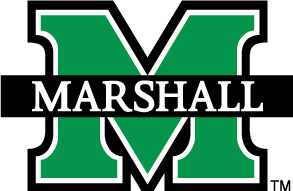Teaching Philosophy
My philosophy of education began to take form at Texas A&M University in 1969 as I sat in on Dr. John Mackin’s course on the “Biology of Symbioses.” Dr. Mackin’s lectures were based on his extensive research experiences with invertebrates representing widely divergent groups, and those lectures were delivered with the confidence and authority of one who had learned through practice, rather than one who had learned from textbooks.
The value of strengthening one’s teaching through research was later reinforced by Dr. Leon Ginsberg, former Chancellor of the West Virginia Board of Regents, who wrote knowingly in the Charleston Gazette (20 February 1985) that:
“Through sound research, professors know what to teach and how to serve others. Equally important, they know what is unproven or false or harmful. And they know how to tell the difference. The knowledge or ability to distinguish between truth and everything that is not may be the most important subject taught at any college or university.” [my boldface].
I wanted to emulate Dr. Mackin; to be able to offer students the benefit of my actual experiences working with many different types of invertebrate animals. After 20 years, or so, of publishing papers – on protozoans, freshwater clams and snails, annelids, parasitic copepods, fleas, mites, carrion flies and mosquitoes; and that assemblage of worms that parasitize both freshwater and marine fishes, and amphibians – I felt that I could lecture comfortably about many different kinds of invertebrate taxa in much the same manner as Dr. Mackin had done. As a result of his influence, and the words of Dr. Ginsberg, my last 17 years have been spent lecturing largely from my research experiences, and involving students in research (focusing them in developing projects, compiling and critically examining their data, and writing) that resulted in scientific publications. I consider the latter effort more a form of teaching than research.
Before going to A&M, I had memorable interactions with several Marshall University professors; most notably Howard Mills (research on orchid growth, and plant ecology in Costa Rica), Jon Shoemaker (who introduced me to animal parasites), Gene Frum (the most meticulous preparer of lectures I have known), and Sam Clagg (whose demand for precision in one’s work was unparalleled).
I am indebted to others, as well. There is Stuart Thomas, a friend and colleague, who taught me more about statistics and scrutiny of data than I ever thought possible. Sewell Hopkins, my major professor at A&M, honed my data analysis and writing skills. Sewell, with his bachelor’s degree in English, was a demanding taskmaster when it came to having his students succinctly express their thoughts on paper. And Harold Harry, another A&M professor, who upon advising me about writing a paper on the snail vectors of human schistosomiasis, commented; “They just count ‘em Jim, but you’ve got to do good work because someday, someone might just pick up a piece of your work and actually read it.” Like most (all?) of us, I owe a great deal, to a great many.
Historically, Marshall University’s Department of Biological Sciences has held to the philosophy of “teaching first”, with most faculty engaging in research to compliment their instructional activities. My efforts reflect this departmental philosophy. Thus in a very real sense I view my research as an integral, and inseparable, extension of my professional development as a classroom instructor.
I believe that professors engaged in research within their disciplines ignite student imagination in the classroom or laboratory. As university faculty we are in a unique position to set examples for students. Students generally do not know the author(s) of their texts, and thus text material often seems far removed from their world. Students, especially those in low enrollment advanced courses, come to know their professors on our campus, and when they see their professors writing about topics in the text, that material becomes much more real for them. Good students seek out these professors for project ideas. Students begin to realize that they too can engage in the development and exchange of ideas, and they get excited about the prospect of being in the game rather than observing from the sidelines. We can show these students how to design experiments, how to formulate hypotheses, collect and examine data, and then encourage them to write or present their work before peers at scientific meetings. It is hoped that those critical thinking, writing, and speaking skills acquired through such tangible experiences will be carried with them as they merge either into the science marketplace or professional schools.
The exciting part of my job is the wonderful opportunity to put into practice what John Dewey wrote nearly a century ago, namely that: “Learning is based on discovery guided by mentoring, rather than on the transmission of information.” And the mentoring of those students who are beginning to develop a true thirst for the scientific process is indelibly gratifying.
